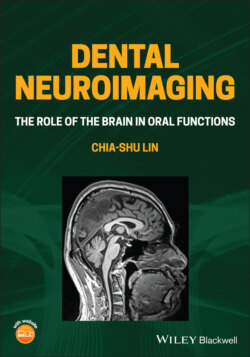Читать книгу Dental Neuroimaging - Chia-shu Lin - Страница 44
1.3.2 Links Between Neuroimaging and Key Issues of Oral Neuroscience
ОглавлениеAs a new discipline of neuroscience, how does neuroimaging help investigate these key issues of oral neuroscience? Table 1.2 shows that neuroimaging research has been engaged with all the key issues in oral neuroscience (Iwata and Sessle 2019). For example, in terms of the pathway of pain processing, neuroimaging research extended our understanding of the circuitry from the spinal mechanism to brain mechanisms, showing cortical and subcortical activation associated with acute and chronic orofacial pain (Brügger et al. 2012; Gustin et al. 2011) and complicated mechanisms of pain modulation (Desouza et al. 2013; Gustin et al. 2012; Moayedi et al. 2012; Younger et al. 2010). Importantly, because neuroimaging research is conducted in human subjects, psychosocial factors, such as emotional and attentional factors related to pain, can be investigated (Weissman‐Fogel et al. 2011; Abrahamsen et al. 2010; Youssef et al. 2014). Neuroimaging also helps to reveal the brain mechanism of swallowing and chewing (Lowell et al. 2012; Quintero et al. 2013). Notably, by directly assessing the dental patients who received treatment, translation between clinical practice (e.g. installation of denture prosthesis) and neuroscience can be achieved (Kimoto et al. 2011; Luraschi et al. 2013). Also, the perceptual processing of oral functions, which relies on self‐reports from human subjects, including tactile and gustatory senses, can be studied using neuroimaging (Nakamura et al. 2011; Trulsson et al. 2010). As an in vivo imaging method, neuroimaging has become the crucial method for studying the perceptual and psychosocial aspects of oral functions, which are difficult to approach with animal models.
